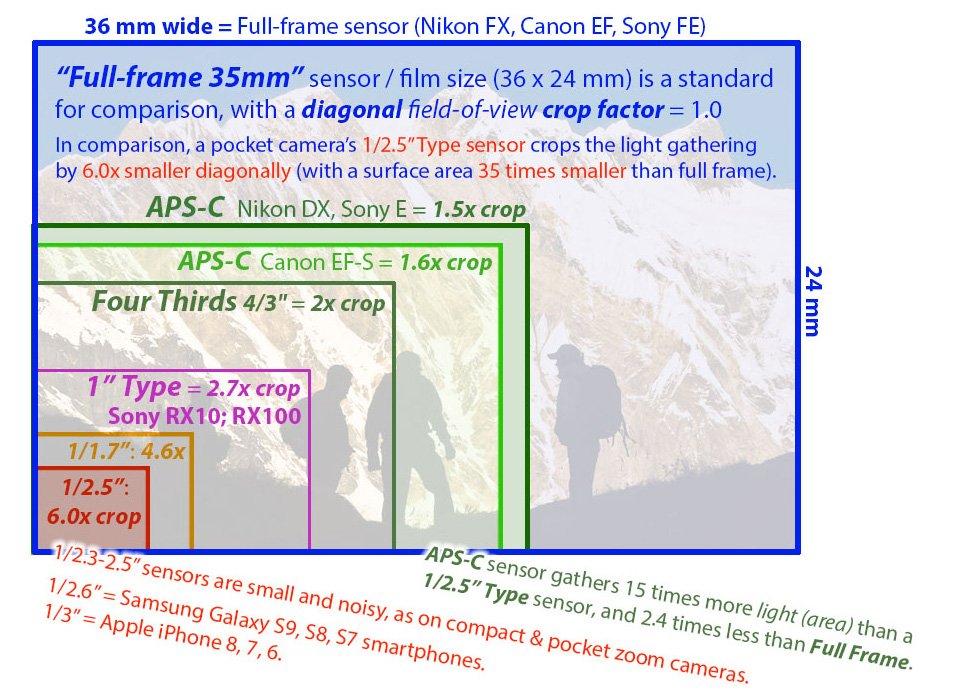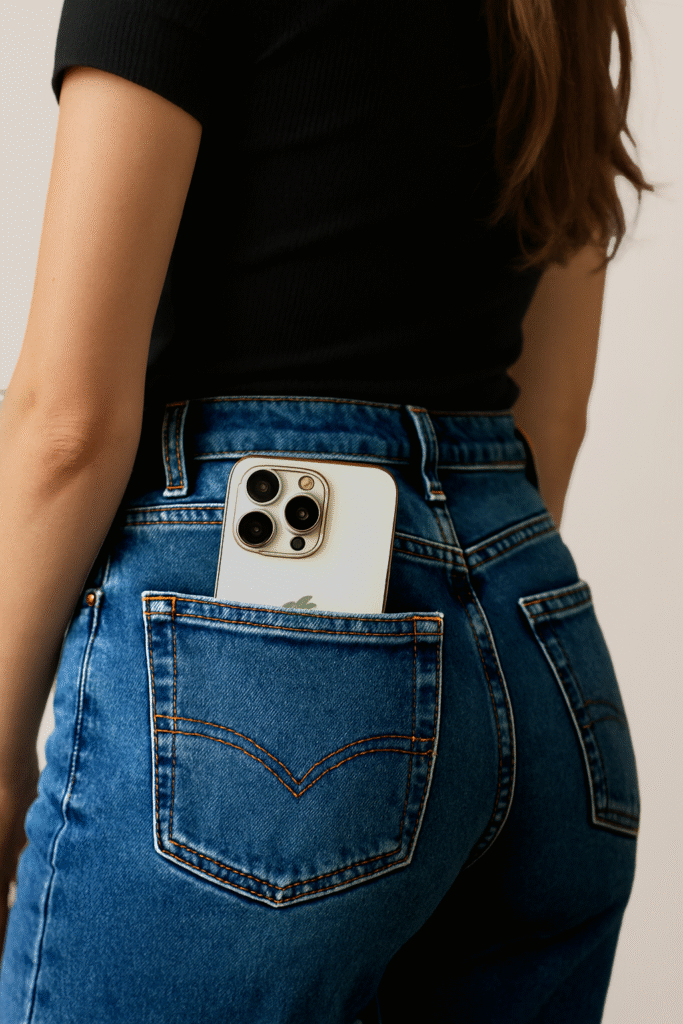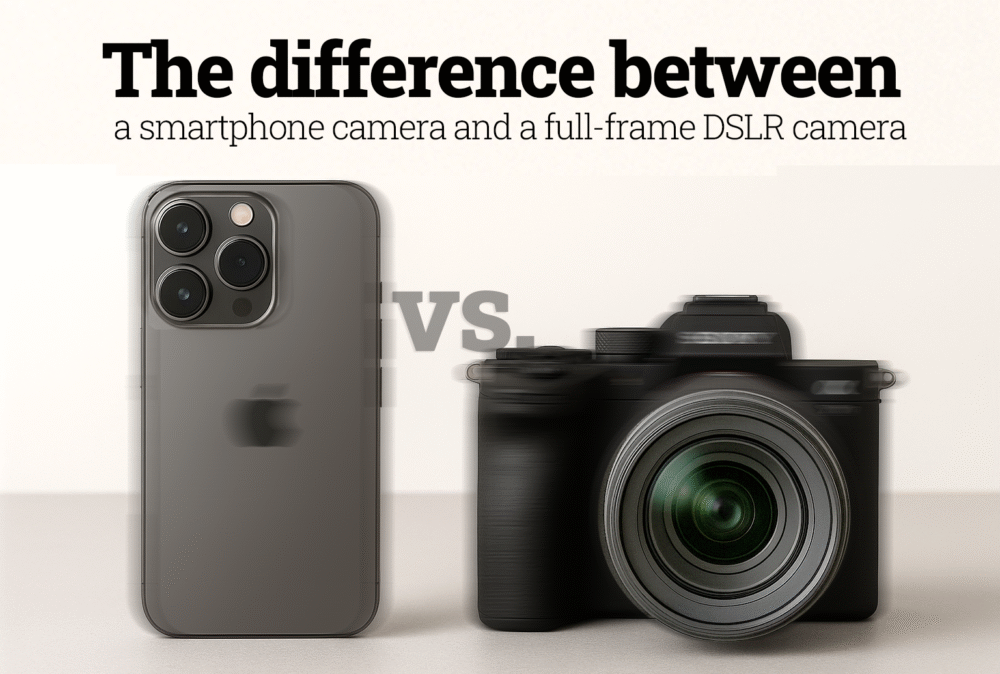Phone Cameras vs Pro Cameras: The Power of Editing
Smartphone camera technology has advanced significantly lately. Frankly, it sometimes feels like other features are being neglected in favor of the camera. We’re still seeing a lot of marketing around megapixels like 200MP and zoom capabilities like 100x.
Given this, a natural question arises: “Has the smartphone camera surpassed the full-frame mirrorless camera?” With smartphone camera performance reaching this level, some might argue that mirrorless cameras are no longer necessary.
Of course, smartphones haven’t completely overtaken mirrorless cameras. So, how do they differ, and where do mirrorless cameras excel compared to smartphones? Let me explain it simply.
My Experience with Full-Frame Mirrorless Cameras
Before discussing the differences, let me briefly share my experience with full-frame cameras. For five years, I’ve used the following models:
- 2018: α7Rii
- 2019: α7Riii
- 2021: α7C
- 2023 – 2025: α7IV
I’ve stuck with the SONY α series because I find it bothersome to remember the names of other manufacturers’ cameras. Since 2018, all my photos have been taken with full-frame mirrorless cameras.
As of 2025, I also use the α7IV for video shooting, and I’m truly grateful for my SONY cameras. I can’t do my work without them, and I use them frequently, so I believe I have a decent understanding. Probably.
【Conclusion】Mirrorless Camera Photos Excel in Editing
To get straight to the point, the biggest difference between full-frame mirrorless cameras and smartphone cameras is the resilience to editing. Photos taken in RAW format with a full-frame mirrorless camera can be heavily edited later. In fact, you can even shoot with editing in mind, creating photographs as works of art. This is the greatest strength of full-frame mirrorless cameras.
That’s why I post-process all my photos in Lightroom, spending a significant amount of time on each one. Specifically:
<Before Editing>

<After Editing>

This capability is the strength of full-frame mirrorless cameras.
Full-Frame Mirrorless Cameras Are Specialized for Camera Functions
Depending on the model and lens, full-frame mirrorless cameras have various strengths, such as creating excellent background blur, boasting incredible continuous shooting speeds, or being overwhelmingly strong in night photography. However, these features are for some professionals.
More than anything, their strength lies in post-processing. This is the biggest advantage of full-frame mirrorless cameras.
Full-Frame Mirrorless Cameras Have Very Low Noise
You might think, “Can’t you edit smartphone camera photos later if you shoot in RAW?” But it’s not the same. If you actually try it, you’ll be disappointed by the poor editing resilience.

The reason is the excessive noise. Try brightening a dark photo taken with a smartphone. It will become grainy with noise, and the colors will be a mess, resulting in an unusable photo.
This is because the amount of color information depends on the physical sensor size. No matter how hard they try, smartphone cameras with their small sensors cannot beat full-frame mirrorless cameras in terms of image quality.
Even APS-C sensors are overwhelmingly different compared to full-frame, and smartphones with sensors smaller than 1 inch are no match for full-frame.
The Amount of Noise is Determined by Sensor Size and Megapixels
Simply put, the amount of noise is determined by the sensor size and the number of megapixels.
Think of sensor size as the amount of light it can receive, and megapixels as the amount of light distribution.
It’s better to receive more light, and it’s better to have less light distribution.
For example, the α7Siii, known for its excellent high-ISO performance, has a full-frame sensor that receives a massive amount of light and distributes it to only 12 megapixels.
That’s why it’s very strong in night photography.
Fewer Megapixels Mean Less Noise
On the other hand, even though the latest high-end smartphone cameras boast a 1-inch sensor, the one with 12 megapixels will have less noise than one with 100 megapixels, even if they have the same 1-inch size.
In fact, the α7IV I currently use has a full-frame sensor but only 33 megapixels. That’s why it has low noise and is excellent for post-processing.
Smartphone’s 100 Megapixels Are Quite Useless
This raises a question: If even full-frame has 33 megapixels, isn’t 100 megapixels on a smartphone sensor a waste?
You’re right. Basically, you can consider 100 megapixels useless, not just on smartphones. Even for printing large posters, this resolution is completely unnecessary.
It’s just a marketing tactic to deceive consumers who mistakenly believe that a larger number looks impressive. No one can explain what that many megapixels are for.
However, 100 Megapixels Can Miraculously Shine Under Good Conditions

That condition is shooting on a clear day at noon. If the sensor is small, the amount of light it can receive is limited from the start. But it’s a different story on a clear day at noon when it’s filled with abundant light.
Even a small sensor can receive plenty of light, allowing it to distribute that light across all 100 megapixels. In other words, 100 megapixels can be miraculously helpful. That’s why smartphone’s 100 megapixels can take good photos in extremely limited, very favorable conditions.
100 Megapixels Are Useless in Most Environments
But it’s different in other situations. Good lighting conditions are rare in everyday life. Most photos are taken in less than ideal conditions.
Even on a clear day at noon, in the shade, at dusk, indoors, or at night when light is insufficient, the sensor can’t receive enough light and is forced to distribute it among 100 million pixels, unnecessarily increasing noise.
Smartphone’s 100 megapixels are like a sniper rifle that is extremely picky about the environment. In many situations, a pistol would be a better weapon. In other words, smartphones should reduce the number of megapixels considering their sensor size.
iPhone 16 Pro Still Has 12 Megapixels
The reason why iPhones have maintained 12 megapixels up to the 16 series is this. Even with the iPhone 16 Pro, unless you shoot in RAW in Pro mode, it’s still 12 megapixels. This is because there’s little benefit to increasing the number of megapixels on a small sensor.
Full-Frame Mirrorless Cameras Are Cumbersome and Difficult
So, should many people buy full-frame mirrorless cameras? The answer is also no, because it’s challenging. As I said at the beginning, full-frame mirrorless cameras are ultimately for creating art.
No one wants to adjust aperture, shutter speed, ISO, and white balance before shooting. They’re not usually photographing anything that grand, and of course, they won’t be doing any post-processing.
Moreover, mirrorless cameras don’t fit in your pocket, making them difficult to carry around, and everything about them is cumbersome.
The Essence of Smartphone Cameras is Convenience

The reason many people started taking photos is simply because their smartphones happened to have a camera, not because they bought a smartphone to take pictures. Before smartphones became widespread, only a minority of people owned cameras. In other words, for many people, photography is just something casual, and the essence of smartphone cameras is convenience.
They want to capture the moment as a memory or a record. The image quality doesn’t have to be perfect. It’s okay if they can look back at it sometimes and reminisce. That’s why everyone started taking photos for the first time with the advent of smartphones.
Smartphone’s AI Image Processing is Amazing
Smartphones have fully catered to the demand for these memory and record photos. As a result, they have surpassed full-frame mirrorless cameras in one crucial aspect: the perfection of convenience.
This is because the accuracy of automatic shooting based on AI learning in smartphone cameras is incredible. You don’t need to think about aperture, shutter speed, ISO, or white balance. Just take it out of your pocket, frame the shot, and press the shutter button. You’ll get a decent photo, and the quality of these photos is truly impressive.
Smartphones Tend to Take More Beautiful Pictures Than Mirrorless Cameras
With a smartphone, you can take photos that look like they were shot and edited by a professional with a full-frame mirrorless camera, without any prior knowledge. That’s why smartphone photos often look better than photos taken with a mirrorless camera by someone without the knowledge to use it properly.
Of course, they can’t compare to a full-frame mirrorless camera used and meticulously edited by someone serious about photography. However, if you compare the automatic mode of a full-frame mirrorless camera with the automatic mode of a smartphone, the smartphone often wins.
Full-Frame Mirrorless Cameras Are Useless for the Average Person
In conclusion, I naturally recommend smartphones with higher-quality cameras over full-frame mirrorless cameras.
This is because full-frame mirrorless cameras are useless unless you use them for work. The body and lens alone cost at least $2,800, and all they do is take pictures. There’s no way the average person needs something like that. If I were still a company employee, I would never have bought one.
APS-C and 1-inch Sensors Have an Ambiguous and Subtle Position
What about APS-C entry-level mirrorless cameras? Their position is also ambiguously subtle. They are cleaner than smartphones but overwhelmingly inferior to full-frame. And in my opinion, 1-inch sensors are even more subtle.
Sensor Size Doesn’t Matter for Smartphone Cameras
As I wrote earlier, the difference in sensor size leads to a difference in post-processing resilience due to the amount of noise. And for smartphone cameras, which don’t undergo post-processing, there’s little point in increasing the sensor size.
It just needs to look good. That’s the role of a smartphone camera.
Even if a 1/1.3-inch sensor becomes a 1-inch sensor, the difference is only a slight increase in dynamic range and a slight blurring of the background. Noise also decreases, but the impact is small if you don’t do post-processing.
Of course, a larger sensor size is always better. However, the difference between 1-inch and 1/1.3-inch is minimal, and for smartphones, AI-powered editing technology is more important than sensor size.
Price, Availability, and Balance are Important
Of course, if you’re particular about it, you can choose a smartphone with a 1-inch sensor. But it’s questionable whether you’ll notice a difference in image quality that justifies the difficulty of acquisition, high price, and limited warranty. A smartphone with a 1/1.3-inch sensor, which emphasizes reasonable price, high availability, and overall ease of use based on warranty and market share, will make more people happy.
In that sense, choosing the iPhone 16 Pro or Pixel 9 Pro, which can take good-looking photos with a sensible 1/1.3-inch sensor and reasonable resolution, is a safe bet.
Smartphones Can Easily Take 80-Point Photos
It goes without saying that a full-frame mirrorless camera costing $2,800 that can only take photos won’t lose to a smartphone in terms of image quality.
Nevertheless, full-frame mirrorless cameras are very difficult to handle. There are many shooting settings to understand to capture a 100-point photo, and post-processing is essential. Therefore, if you’re going to shoot in automatic mode, it’s better not to use a mirrorless camera at all. The automatic mode of a smartphone equipped with superior AI learning will take much better-looking photos than the automatic mode of a full-frame mirrorless camera.
Furthermore, full-frame mirrorless cameras are very cumbersome to carry around. Therefore, smartphones, which are easy to carry, are overwhelmingly superior for most people, and full-frame mirrorless cameras, which can only take photos, are useless.
Unless you use it for work, a full-frame mirrorless camera is unnecessary, and a smartphone is sufficient for recording memories. Therefore, you can continue to use your smartphone, and choosing the latest iPhone or Pixel will be the safest option.

